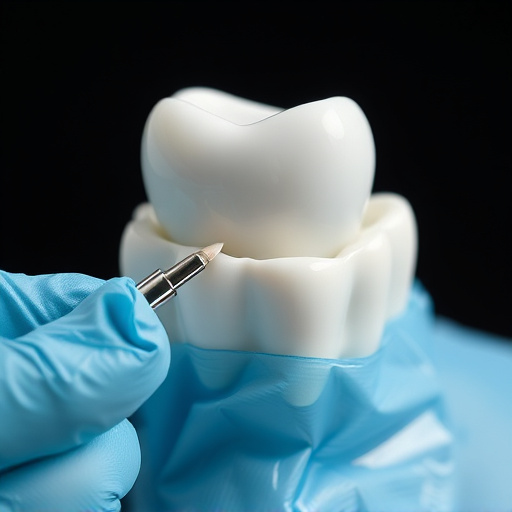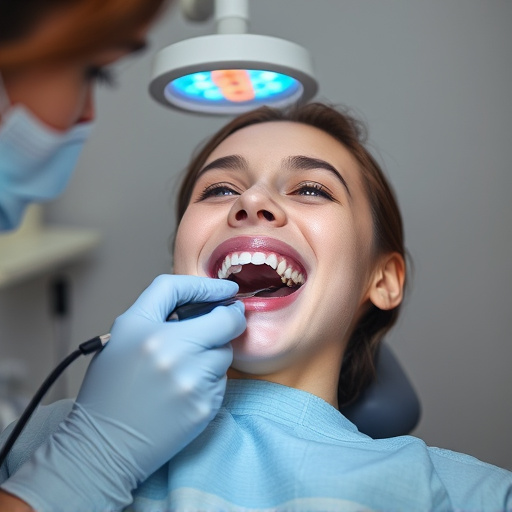Walk-In Dental Appointments: Efficient Routine Cleanings Made Easy
Walk-in dental appointments are a convenient and accessible way to address urgent dental concerns an…….
Walk-in dental appointments have emerged as a game-changer in the oral health care industry, offering immediate and accessible care to patients worldwide. This innovative concept allows individuals to receive dental treatment without the need for extensive planning or appointments, addressing a significant gap in traditional dental service delivery. In this comprehensive article, we will explore the various facets of walk-in dental practices, their global impact, economic implications, technological innovations, regulatory landscape, and future potential. By delving into these aspects, we aim to provide an insightful guide for both professionals and patients navigating this evolving sector.
Walk-in dental appointments refer to a patient’s ability to visit a dental clinic or practice without prior scheduling or referrals. Patients can simply drop in at their convenience, and dental professionals assess their needs, providing appropriate care on the same day. This model includes various services, from routine check-ups and cleanings to emergency treatments like tooth extractions and temporary fillings.
The core components of a successful walk-in dental appointment system include:
The concept of walk-in dental care has its roots in the early 20th century when dental practices began to shift from exclusively treating wealthy patients to serving a broader population. During this period, many dentists started offering limited walk-in services as a way to cater to working-class individuals with urgent dental needs. However, it was not until recent years that walk-in dental appointments evolved into a structured model, driven by technological advancements and changing healthcare demands.
In the digital age, online booking systems, real-time scheduling software, and telemedicine have revolutionized how patients interact with dental care providers. These innovations enabled dentists to efficiently manage their time, prioritize cases, and accommodate walk-in patients without disrupting scheduled appointments. As a result, walk-in dental practices have gained popularity, especially in urban areas with high population densities.
Walk-in dental appointments have left a significant global footprint, gaining traction across various regions due to their potential to improve oral health outcomes and accessibility. The World Health Organization (WHO) emphasizes the importance of universal access to oral health services, and walk-in clinics align with this goal by providing immediate care to underserved populations.
The global dental market is a significant economic sector, with walk-in dental appointments contributing to its growth. According to a 2022 report by Grand View Research, the global dental services market size was valued at USD 379.8 billion in 2021 and is expected to grow at a compound annual growth rate (CAGR) of 5.4% from 2022 to 2030. Walk-in clinics cater to both local communities and tourists, driving revenue and creating job opportunities.
Investor interest in walk-in dental practices has increased due to their potential for high profitability and positive social impact. These businesses often attract venture capital funding and private equity investments, especially in regions with a proven demand for such services. The availability of affordable rent in urban areas also makes walk-in clinics an attractive option for entrepreneurs.
Walk-in dental appointments can have far-reaching economic effects:
Technology plays a pivotal role in modern walk-in dental practices, enhancing patient experience and operational efficiency:
The future holds immense potential for technological advancements in walk-in dentistry:
The regulatory landscape surrounding walk-in dental appointments varies across jurisdictions, reflecting local priorities and healthcare systems:
Policies and regulations play a critical role in shaping walk-in dental practices:
Despite its many advantages, walk-in dental appointments face several challenges:
To address these challenges:
A prominent walk-in dental practice in New York City serves a diverse range of patients, from local residents to tourists. They offer a full spectrum of services, including emergency care and cosmetic dentistry. The clinic’s success lies in its efficient operations, advanced technology, and patient-centric approach. Online booking, real-time scheduling, and telemedicine ensure minimal wait times, while a modern treatment facility equipped with the latest equipment caters to various dental needs.
In a low-income neighborhood of São Paulo, a community dental center provides essential oral health services to underprivileged children and families. Their model focuses on prevention and education, offering free check-ups, cleanings, and basic treatments. The center collaborates with local schools, community leaders, and NGOs to promote oral health awareness. This case demonstrates how walk-in appointments can improve access to care for underserved populations.
A unique approach in rural New South Wales involves a mobile dental unit that visits remote communities several times a year. This initiative ensures that residents, many of whom are Indigenous Australians, receive regular dental care without the need to travel long distances. The unit provides a range of services, including examinations, cleanings, and basic surgeries, addressing critical oral health needs in underserved regions.
The future of walk-in dental appointments holds immense potential:
Keep an eye out for these emerging trends:
To capitalize on future opportunities:
Walk-in dental appointments have revolutionized access to oral health care, offering immediate and convenient solutions to patients worldwide. This article has explored various aspects of this innovative model, from its historical roots to global trends, economic implications, technological advancements, regulatory considerations, and future prospects. By addressing challenges and showcasing successful case studies, we have highlighted the transformative potential of walk-in dentistry. As technology continues to evolve and healthcare systems adapt, walk-in dental appointments are poised to play an increasingly vital role in improving oral health outcomes for millions worldwide.
Q: Are walk-in dental appointments suitable for all types of dental emergencies?
A: While walk-in clinics offer emergency care, they may not have the same level of specialized equipment and resources as hospital emergency departments. For life-threatening situations or complex dental issues, patients should seek immediate attention at a nearby hospital. Walk-in clinics are best suited for non-urgent, yet time-sensitive, dental emergencies.
Q: How can I find a reputable walk-in dental clinic?
A: Research is key. Look for clinics with positive online reviews, check their credentials and licensing, and inquire about the qualifications of the dental professionals. Reputable clinics will prioritize patient safety, maintain modern facilities, and offer transparent pricing.
Q: Do insurance policies cover walk-in dental services?
A: Insurance coverage varies. Most plans do cover walk-in appointments, but patients should verify their specific policy details. Understanding your benefits can help ensure financial accessibility and a smoother experience during your visit.
Q: How do walk-in dental practices ensure efficient wait times?
A: Efficient scheduling systems, including online booking platforms and real-time appointment management software, are crucial. These tools enable dentists to prioritize cases based on urgency and patient needs, minimizing wait times for all visitors.
Q: Can walk-in dental appointments replace regular dental check-ups?
A: Walk-ins are best suited for urgent care or routine cleanings and check-ups. For comprehensive oral health assessments and ongoing treatment plans, it’s essential to maintain regular visits with a dentist of your choice.

Walk-in dental appointments are a convenient and accessible way to address urgent dental concerns an…….

Walk-in dental appointments are a transformative approach to bridge oral health disparities, especia…….

Walk-in dental appointments offer convenient, accessible solutions for urgent oral health concerns a…….